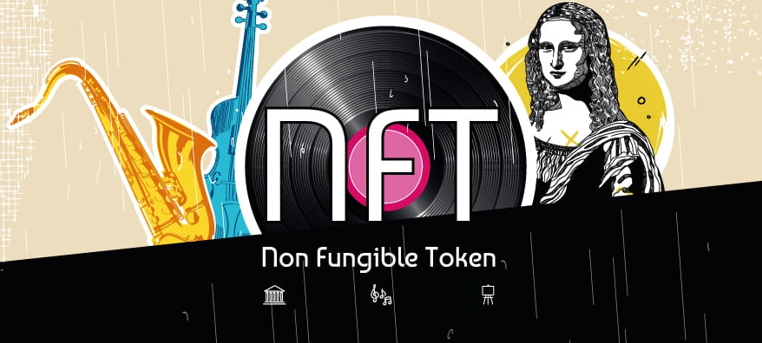Getting to know NFTs

Non-Fungible Tokens (NFTs) are the latest trend in the
crypto and digital asset world. But before we analyze their use, let's dive
into some basic definitions in order to be able to understand the scope of this
article.
"Fungibility" is a term referring to things that you use on a daily basis.
Consider these things to be physical money... or even Bitcoin. Therefore, since
bitcoin is fungible this means that you can exchange one for another and get
exactly the same thing; only instead of holding money, they use technology to
buy or sell digital collectibles, including art, music, video games, concert
tickets or anything else related and comes in digital form.
The same term, also refers to the fact that something is original and cannot be
replaced by anything else.
NFTs became popular in 2017 with the release of the game called
"CryptoKitties", which allowed players to purchase and "breed"
limited-edition virtual cats (eye-roll!) that "lived" forever on the Ethereum
blockchain.
Following that, game developers embraced NFTs in a major way, allowing players
to earn in-game goodies like digital shields, swords, or similar prizes, as
well as other game collectibles.
Soon after their release, Cryptokitties went viral, with some Cryptokitties
fans spending $20million of ether purchasing, feeding, and nurturing them and since
2017 a total of $174 million has been invested on NFTs.
Overall, NFTs validate an item's ownership by storing the data in a distributed
digital database known as a "blockchain", which is stored on computers all over
the internet, making it almost impossible to lose or damage and can be used to
trace an object's digital origin, as well as cannot be replicated or duplicated
(well basically they can,
but the authentic piece is owned by just one owner; just like a rare painting
made by a famous artist years ago).
Unlike traditional cryptocurrencies they cannot be
directly traded, due to the fact that no two NFTs are alike - including those
that exist on the same website. Consider this like a concert ticket that has
its own unique number, purchaser's name, etc., making it difficult to trade
with another.
So why are
NFTs important?
Non-fungible tokens are a step up from the comparatively basic idea of
cryptocurrencies and one of its main advantages is market efficiency; gaining
access to a global marketplace without the high friction associated with
cross-border payments. For example in the real estate market, when a real
estate NFT is transacted, it will automatically submit its details to a land registry.
NFTs are a step forward in the reinvention of this infrastructure because they
allow digital representations of physical assets.
Converting a physical asset to a digital asset streamlines procedures and
eliminates intermediaries. The use of NFTs on a blockchain to reflect digital
or physical artwork enables artists to interact directly with their audiences
and enhance business processes.
As a result, a painting does not always have a single owner. Its digital
counterpart can have several owners, each of whom is responsible for a
"portion" of the painting. Such agreements could boost the artwork's value and
the artist's revenue.
Additionally, NFTs have the potential to eliminate intermediaries, simplify
transactions, and build new markets. As NFTs become more advanced and
incorporated into financial infrastructure, it could be possible to combine the
same idea of tokenized pieces of property, each with a different value and
location, in the physical world.
Having said that, non-fungible tokens are
also useful in identity management. Take a look at the case of physical
passports. These may be converted into NFTs, each with its own unique
identifying characteristics, allowing jurisdictions to streamline entry and
exit processes more easily in the digital world.
Apart from all the excitement, there are concerns that NFTs are not
environmentally friendly because they are based on the same blockchain
technology as other cryptocurrencies. As such, each NFT transaction on the
Ethereum network consumes the same daily energy of two American households.
Nevertheless, the pace at which blockchain technology is transformed into a
newer, more eco-friendly version may well determine the future of the NFT
market in the short term.
Whether or not the current NFT trend will be sustainable, NFTs have already
intensified a broader trend of digital economic innovation as well as opening
up new business opportunities.
While there are already a few extremely promising applications for the
technology in a few key industries that should slowly see growth over the next
three years, some argue that the NFT "madness" will be short lived, mainly in
the art sector.
Since any digital information can be easily "minted" into an NFT,
which is a highly efficient way of managing and securing digital properties,
there's a high optimism that the NFT market is expected to grow further.
Sources:
- https://www.euronews.com/2021/04/02/what-are-nfts-and-why-are-they-suddenly-so-popular
- https://www.morningstar.co.uk/uk/news/211301/what-are-nfts.aspx
- https://www.bbc.com/news/technology-56371912
- https://www.investopedia.com/non-fungible-tokens-nft-5115211
- https://finance.yahoo.com/news/nfts-202525670.html
- https://www.reuters.com/business/nfts-are-hot-so-what-are-they-2021-03-17/




